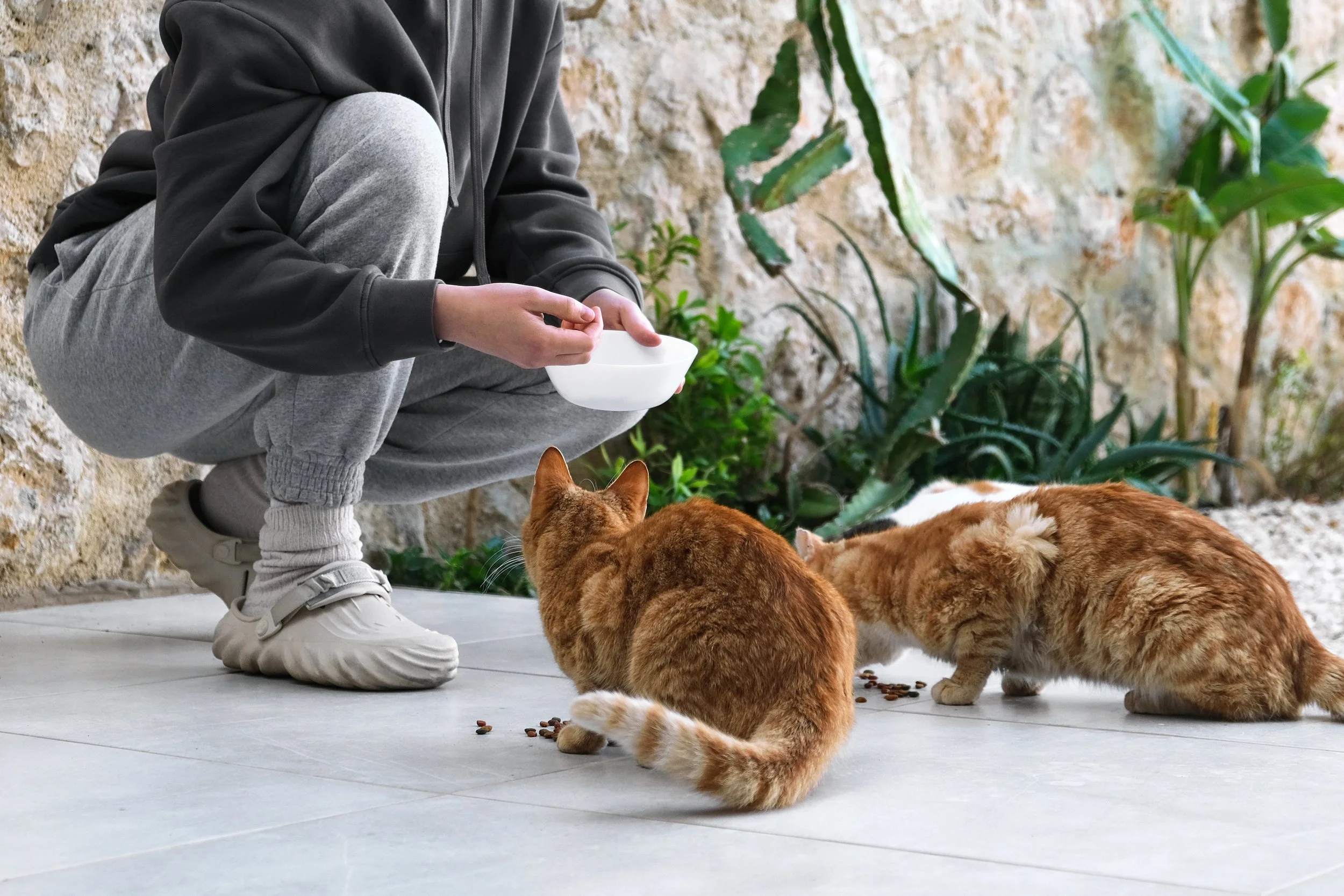How to Socialize a Shy or Formerly Feral Cat
Bringing a shy or formerly feral cat into your home takes a lot of patience and love. While these cats may never become lap-loving social butterflies, with time and care, they can learn to trust, engage, and even flourish in a home environment.
Feral or shy cats are often the way they are due to experience. Feral cats are taught at a young age to stay out of sight of potential predators, and shy cats usually are just trying to survive after experiencing something that might have made them feel vulnerable or unsafe.
Let’s look at some of the ways you can approach socializing a feral or shy kitty with compassion and lots of patience.
Start With a Safe, Quiet Place
Before introductions or interaction, provide your cat with a designated “safe zone.” A small room with hiding places, food, water, a litter box, and cozy bedding is ideal. This space will serve as their sanctuary – a place to observe and decompress from the stress of their new environment. Smaller rooms are especially good because a stressed-out kitty will usually prefer something easier to manage. Four small walls feel a lot safer than a giant room with a bed in the corner.
Let Them Set the Pace
Shy and feral cats often rely on distance to feel secure. While you may want to do everything you can to make them feel loved, it’s important to resist the urge to rush petting, holding, or even eye contact. Instead, sit in the room quietly and read a book, watch TV quietly, speak softly, or offer some slow blinks – the feline version of a friendly smile. Remember: with cats, trust is earned in small moments, not big gestures.
Create Positive Associations
Food is a powerful socializing tool. Offer high-value treats like wet food, snack tubes or bits of cooked chicken by hand or on a long spoon. Eventually, your cat may associate your presence with good eating! This is usually a big first step in getting a cat to trust you.
Play is also incredibly important. Try using wand toys to engage them from a distance and let them “hunt” without feeling vulnerable.
Respect Their Body Language
One of the first things you need to do is learn your cat’s signals. Hissing, swatting, or retreating is a pretty strong sign they feel threatened. If this happens, back off for a bit and try again later. On the other hand, if they are now offering slow blinks, some gentle grooming, or even sitting near you, these could be signs of growing trust.
Remember to celebrate the small victories, too. A feral cat relaxing next to or near you, in the same room as you, is a huge win.
Keep a Routine
Without a common spoken language between cats and their owners, routine becomes one of the best methods for communication and learning trust. Cats thrive on consistency. Feeding, playtime, and litter box cleaning should occur on a predictable schedule. Over time, routine builds security, and secure cats are more open to socializing.
Gradually Introduce Other People and Pets
Once your cat is comfortable with you, very slowly begin introducing other trusted people or animals. Keep these introductions brief and calm and never force interactions. Always allow your cat to retreat if they feel overwhelmed, and make sure your guests know to speak softly and move slowly.
Celebrate the Little Wins
Maybe they meow back when you speak. Maybe they take a treat from your hand. Maybe they venture out of their hiding spot when you enter the room. Each of these moments is a milestone worth celebrating.
At the end of the day, every cat is different – some will always be more independent, while others may one day climb on your chest for a nap. Wherever your cat lands on that spectrum, your patience and kindness have given them a chance at a peaceful, happy life.
Remember: it’s not about “fixing” them. It’s about building a trusting, loving relationship that will last for the rest of their lives!

